Just as I was about to take my shoes off
On the rooftop there I see
A girl with braided hair here before me
Despite myself I go and scream
“Hey, don’t do it, please!”
Suicide, derived from Latin suicidium, refers to ‘the act or an instance of taking one's own life voluntarily and intentionally’. Japan’s custom of suicide however, may not be as self-explanatory as many might think. During the war era’s, there was a time where people considered suicide to be an honorable death, some going as far as voluntarily ending their own lives. Let’s turn back time a little to gain better understanding.
Whoa, wait a minute what did I just say?
I couldn't care less either way
To be honest I was somewhat pissed
This was an opportunity missed
Suicide as a Japanese ritual
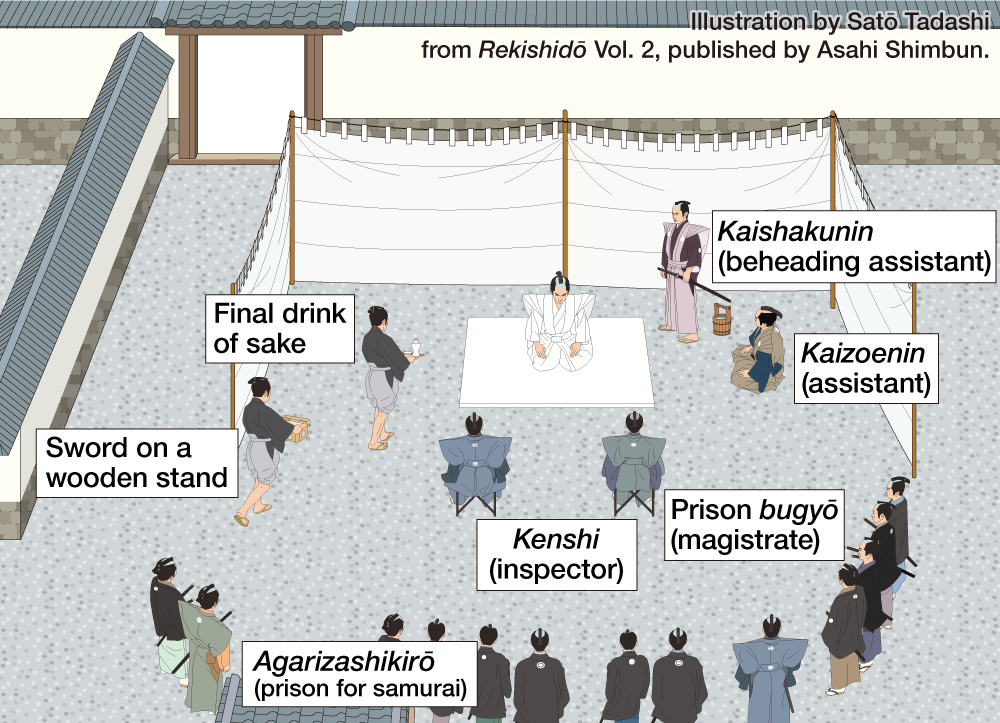
Seppuku (切腹) is a traditional and ritualistic way of committing suicide that was conducted by the samurai of Japan. It dates back to around the 12th century and was considered to be an honorable way of dying. The term is a contraction of setsu (切) meaning ‘to cut’ and fuku (腹) meaning ‘stomach’. Preceding a strict and detailed process, the samurai (wearing a white death kimono) would cut his own stomach (first horizontally then vertically) and was then dealt the killing blow to his neck. This final blow was performed by a so-called kaishakunin, who made sure that the neck wasn’t severed completely. This way, the head would naturally fall into the executed samurai’s arms.
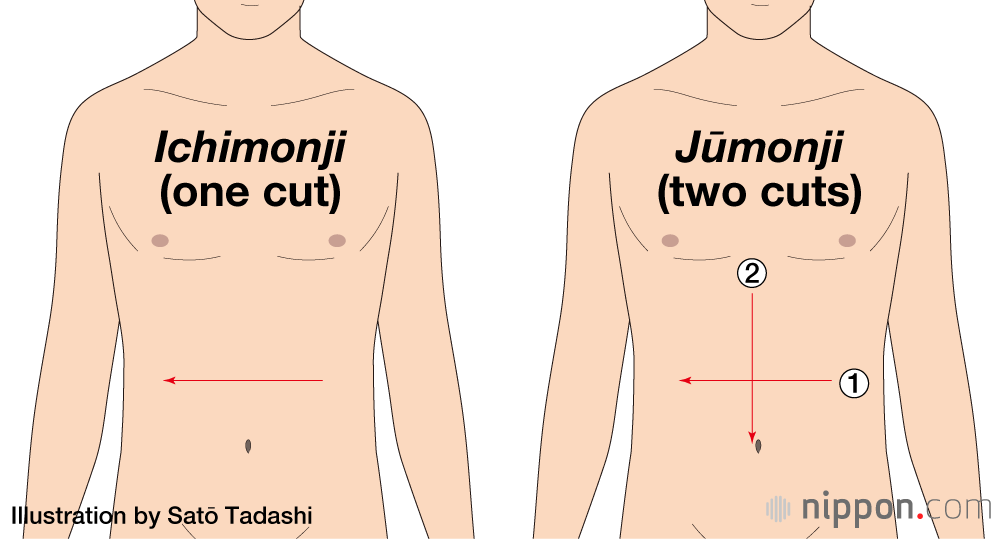
The girl with braided hair told me her woes
You've probably heard it all before
"I really thought that he might be the one,
But then he told me he was done”
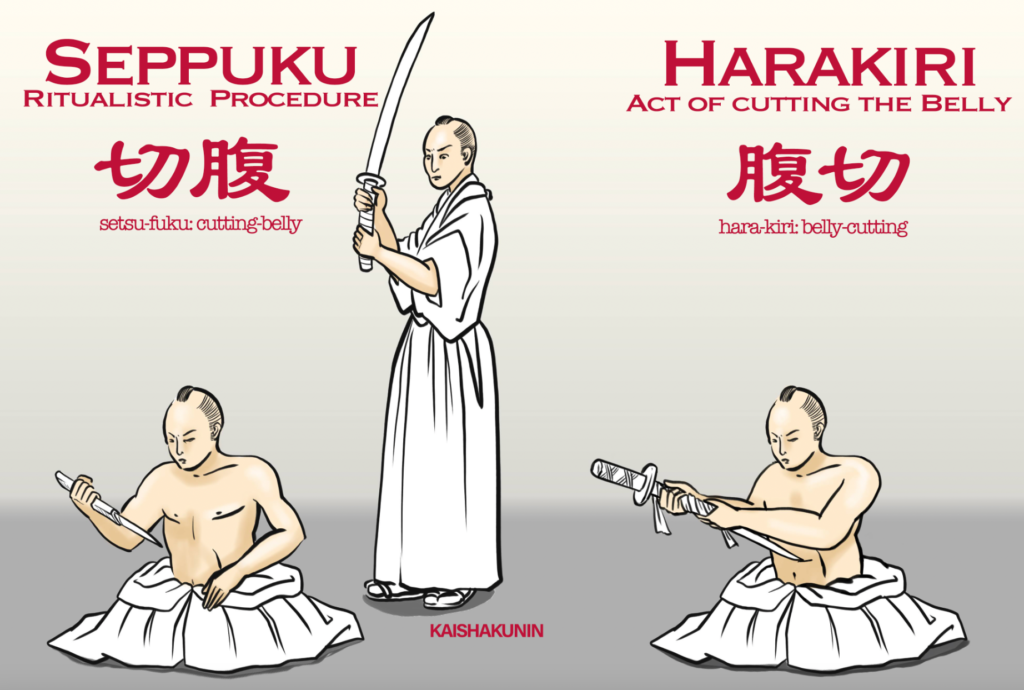
Cutting-belly or Belly-cutting
After doing a fair amount of research, I noticed that the term ‘seppuku’ was often used interchangeably with another term ‘harakiri’. Hara (腹) means ‘stomach’ and kiri (切) means ‘to cut’. You may notice how harakiri (腹切) uses the same kanji as seppuku (切腹), just in reversed order. This implies how harakiri refers to the sole action of cutting the belly, while seppuku embraces the tradition and ritualistic aspect of the action as well.
For God's sake please! Are you serious? I just can't believe
That for some stupid reason you got here before me
Are you upset 'cause you can't have what you wanted?
You're lucky that you've never gotten robbed of anything
The reason why it was specifically the belly they cut is because of ancient and anatomical beliefs that one’s soul and love reside within the abdomen. Thus, committing harakiri was seen as the ultimate way to expose yourself, declaring your honesty, innocence or beliefs one final time.
“I'm feeling better, thank you for listening”
The girl with braided hair then disappeared
Their ‘R’easons
There were multiple reasons why a samurai would die this way, but there are mainly two types of seppuku to distinguish: voluntary and obligatory.
Voluntary seppuku was often committed to either take responsibility for a failure or to avoid capture by an invading army. As even back then, the concept of ‘not losing face’ was a priority in Japanese culture. Other motives that belong to the voluntary category include:
- Proof of innocence on a crime you were (sometimes falsely) accused of
- Expression of hate towards an enemy
- Protest against your lord's decision in hopes of him rethinking it
- Following you lord's death
‘Alright today's the day’ or so I thought
Just as I took both of my shoes off
There was but a girl, short as can be
Despite myself I go and scream
Obligatory seppuku was used to punish disgraced samurai who committed violent crimes or acts of treason. It could also be requested by the victor of a conflict if he wanted the leader(s) of the losing side to die. This way, the victor removed all military or political oppositions, while the samurai that lost still got to die honorably through seppuku. It is important to note that seppuku was only available to the samurai-class. Ordinary criminals would be punished solely by getting their head chopped off, as seppuku was seen as an honor rather than a punishment.
The petite girl told me her woes
You've probably heard it all before
”Everyone ignores me everyone steals,
I don't fit in with anyone here”
20th of August 2022
I’m sitting in the back of the car, my parents in front. After two weeks of beautiful France, the time had come for the insufferable eight-hour drive back home. As per usual, I quickly resort to my headphones and Spotify, the power duo when it comes to passing time. As the landscape and sunny sky flash before my eyes, I shuffle through my playlist; Letting Go, Nights Like These, History Maker... Out of a sudden, a new song I’ve never seen before catches my eye. I read the title:
‘My R’
Written by vocaloid producer Kurage-P back in 2015, My R is a vocaloid song originally sung in Japanese. ‘Vocaloid’ is a voice synthesizer software. This means that the original Japanese version isn’t actually sung by a real person’s voice but was produced artificially. A year after its release, an English version was created by YouTube artist Rachie, which afterwards was covered by a lot more people in the community. There are also plenty of covers in other languages. In the small anecdote you just read (in which I listened to My R for the very first time), I listened to the cover made by an artist named Lollia. Back then, it wasn’t like I was an avid fan of hers, but out of boredom that day I decided to check out more of her covers and... the rest is history :)
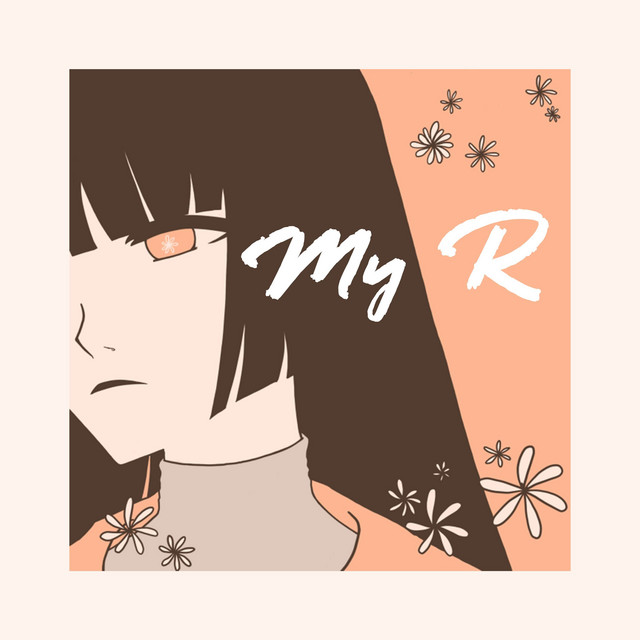
The first thing I noticed was the (in my opinion) catchy beat and melody. I was ready to vibe to this new-found song for the rest of the ride when on the second listen, the lyrics caught my attention.
For God's sake please! Are you serious? I just can't believe
That for some stupid reason you got here before me
'Cause even so, you're still loved by everyone at home
There's always dinner waiting on the table, you know
Behind the ‘R’
"I'm hungry" said the girl as she shed a tear
The girl short as can be then disappeared
As I was listening, I was quick to realize that the saying ‘don’t judge a book by its cover’ should also be applicable for songs. ‘Don’t judge a song by its melody’. At this point, you’re probably not surprised that this seemingly upbeat song describes a story of a girl who wants to commit suicide. She goes up to the rooftop to jump, but catches a girl that already got there before her. Even though she’s annoyed, she still calls out and convinces the girl to turn away by giving other reasons that life is still worth living. This happens repeatedly, every time she comes to the roof. This leads us to the next question: what does the R in ‘My R’ stand for?
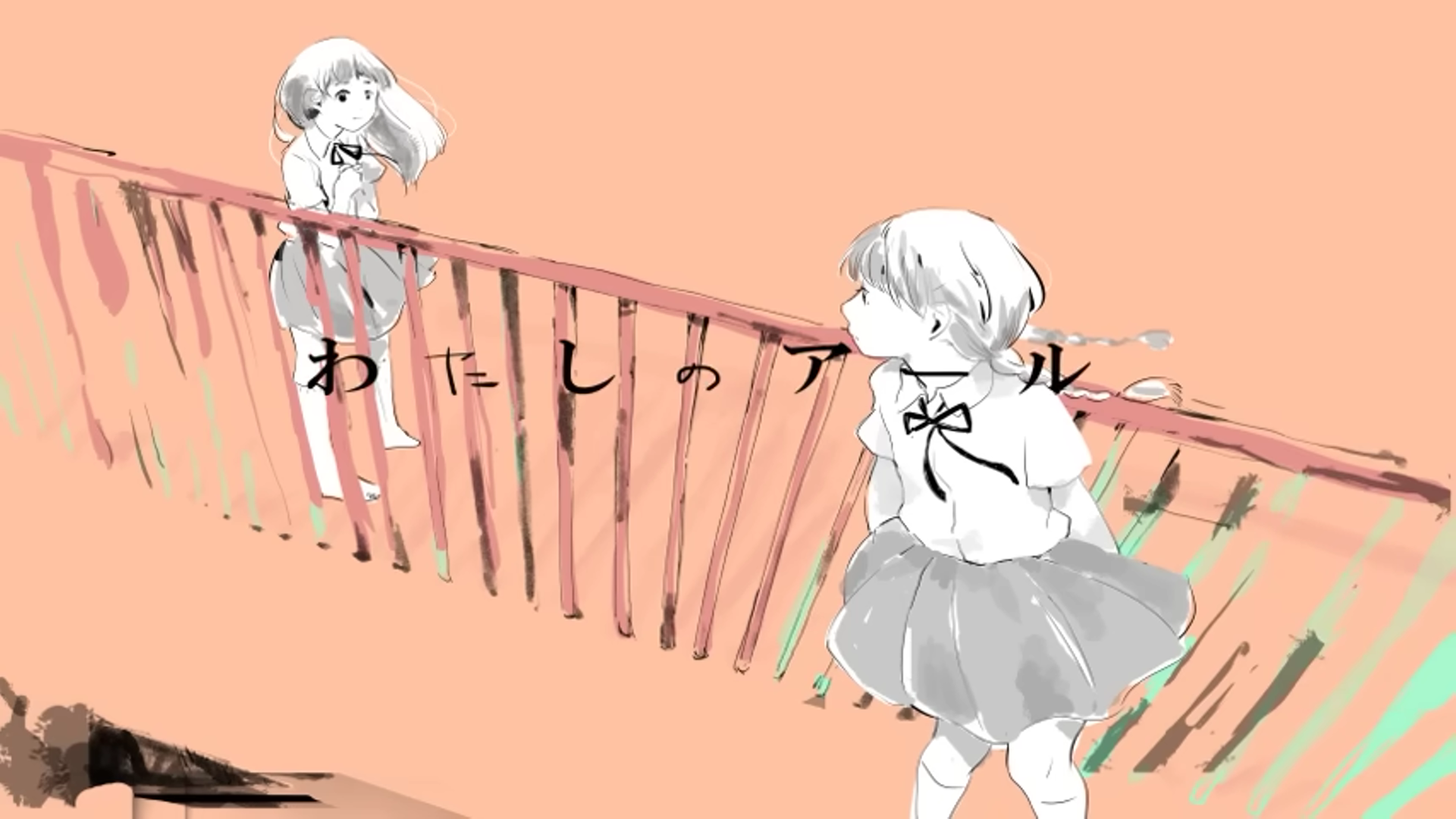
The most commonly believed theory is that the ‘R’ stands for ‘Reason’. This is because when someone takes their own life, one of the bigger questions is always the ‘why’. Why did they do it? What was their reason? Was it a ‘valid’ reason? In the song, the girl with braided hair was suffering from a heartbreak and the short petite girl was getting things stolen from her. The protagonist goes to stop these girls because she thinks they have a ‘stupid’ reason. Other explanations of ‘R’ that I’ve seen fans theorizing about are Rooftop, Regrets, Resistance, Reality, Right, Reply and Reflection.
And like that, there was someone every day
I listened to their tale, I made them turn away
And yet there was no one who would do this for me
No way I could let out all this pain
Perhaps a little farfetched, but a last theory goes as follows: in Japanese the title of the song is ‘Watashi No Aru’ (わたしのアール). The ‘aru’ (アール) is written in katakana, but it has the same pronunciation as ‘aru’ (ある) in hiragana. In hiragana, aru (ある) is a verb that translates to something along the lines of ‘to exist’ or ‘to be’. With this in mind, the title would translate to ‘My Existence’ or ‘My Being’. Ignoring the small detail that in reality the verb aru is only used for non-living objects, I think both translations sound very beautiful.
Now, if you’re wondering about the true intentions behind the ‘R’ as intended by the writer himself, he wrote a blogpost saying the following:
“It’s just the alphabet letter R. Anything I say about it will be boring, so I won’t say much, but it isn’t a kaomoji, there is no double meaning, there is no ‘one thing’. That ‘one thing’ only exists in the comments”.
This sadly debunks the ‘aru’ theory, but it does suggest that outside of that, the title is open for one’s own interpretation. I personally find ‘Reflection’ to hit the hardest once you discover the complete story of My R. I will get into this later.
For the very first time there I see
Someone with the same pains as me
Having done this time and time again
She wore a yellow cardigan
Suicide among the young generation today
As My R features a girl (presumably belonging to the younger generation) who wants to commit suicide, I wanted to briefly touch upon this subject as well. In modern times Japan, suicide is in fact considered to be a major social issue. According to Japan’s Health Ministry, suicide has been the leading cause of death among young people in 2019, 2020 and 2021, transcending the number of deaths by for example traffic accidents or cancer. Data provided by the government showed that the main reasons for the young generation (10 to 30 years old) to commit suicide were problems to do with school, family, work, finances and health. The last one includes mental illnesses such as depression and was the most reoccurring reason.
"I just wanna stop the scars that grow
Every time that I go home
That's why I came up here instead"
That's what the girl in the cardigan said
As for the method of suicide, the top three most common ways were respectively hanging, jumping from heights and carbon monoxide poisoning. About 66% of those ending their lives, choose to do so by hanging. Interesting to notice is that suicide by usage of sharp objects (e.g knife or sword) makes up only 2% of the total suicides. In addition, suicide by using a sharp object to injure the abdomen area (virtually equivalent to harakiri), only takes up 0,2%.
Whoa, wait a minute what did I just say?
I couldn't care less either way
But in the moment I just screamed
Something that I could not believe
"Hey, don't do it, please!"
Nowadays it's obvious that suicide in Japan doesn’t hold the same values anymore as it used to historically, yet the number of suicides is still among the higher in the world. There are several explanations behind this.
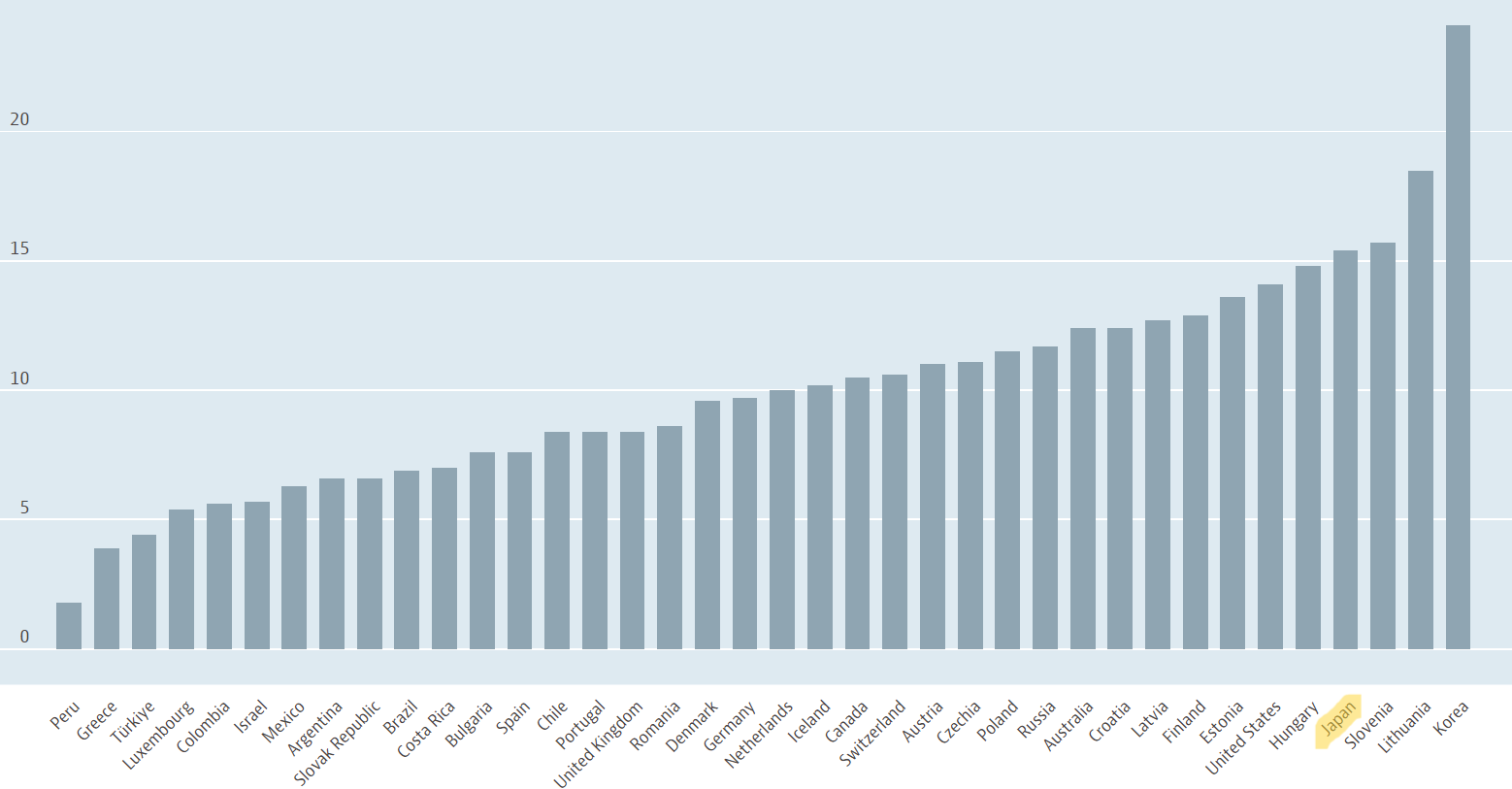
- Looking at Japan’s religious history, Christianity (a religion in which suicide is regarded as a sin) never dominated Japan. Even today, only 1,5% of the population is Christian.
- It is argued that the custom of seppuku did in fact leave its mark on suicide in modern times. Equal to one of the reasons for voluntary seppuku, Japanese people today still use suicide as a means to take responsibility for mistakes. It is also done to not damage the honor of the group to which the individual belonged.
- Many Japanese people resort to suicide to escape the painful situation they’re in. This refers to the problems with school, family, work... which I mentioned before. The issue is that the Japanese national character causes many people to not open up about those problems. A Japanese blogger called Mari elaborated:
“It is said that Japanese people are not good at showing their emotions. Many people consider patience to be a virtue. Compared to other countries, our culture makes it difficult to ask for help when we need it.”
Ah what to do? I can't stop this girl, oh this is new
For once I think I've bitten off more than I can chew
But even so, please just go away so I can't see
Your pitiful expression is just too much for me
I couldn't find predictions on whether the suicide rate will possibly decline in the future, but I do know that there are measures being taken. In 2016, the Nippon Foundation Suicide Prevention Project was established, aiming to provide ‘comprehensive support for living’. They hope to create an environment in which no one feels driven to suicide. Additionally, there have been increased efforts to make mental health services and crisis hotlines more available.
“I guess today is just not my day”
She looked away from me and then she disappeared
Beyond the ‘R’
As I gradually showed you the storyline of the song, it has almost reached its end. Before we’ll get into everything else there is beyond My R, I’ll leave the final two verses here for you to read.
There's no one here today I guess it's time
It's just me, myself and I
There is no one who can interfere
No one to get in my way here
Taking off my yellow cardigan
Watching my braids all come undone
This petite girl, short as can be
Is gonna jump now and be free
My Reflection
Braided hair... Short as can be... Yellow cardigan...
Why did I think the 'R' stands for 'Reflection'? Because all this time, the girl was actually stopping herself from committing suicide. The girl with a broken heart, the girl who got stolen from, the girl who was abused at home... they’re all the same girl; the protagonist of the song. Every time she goes up onto the rooftop, she talks herself out of jumping, reflecting on her reasons which she deems as not ‘good’ enough. Until one day, she doesn’t have any more reasons as to why she should keep trying. There’s nothing more to reflect on. Finally, she jumps and is free.
This theory was confirmed by the writer in the same blogpost as I mentioned before.
Her Reasons
If you pay close attention you’ll notice that throughout the song, the girl’s reasons to keep living become nullified one by one. During every encounter with herself on the rooftop, she gives herself a reason to jump, followed by a reason to live:
| First time | “I really thought that he might be the one, but then he told me he was done” |
| “You're lucky that you've never gotten robbed of anything” | |
| Second time | “Everyone ignores me everyone steals, I don't fit in with anyone here” |
| “Even so, you're still loved by everyone at home. There's always dinner waiting on the table, you know” | |
| Final time | "I just wanna stop the scars that grow every time that I go home” |
| ... |
Notice how the reason to live always becomes the next reason to jump? I think this is a really cool and subtle Easter egg hidden in the lyrics. Besides those three reasons, there’s also this ‘interlude’ in where she describes how “There was someone every day. I listened to their tale, I made them turn away”. This probably means that she came to the rooftop every single day, each day with yet another reason to reflect on.
More Easter eggs
These are a last few things I wanted to point out for you to completely understand the lyrics. If you notice that you have no idea which parts of the lyrics I'm talking about (I understand it's a lot to process all at once), you might want to listen to the song first :) If you do so, you can at once pay attention to the other parts I already broke down!
Different cultures
Before jumping, the girl mentions how she was about to “take her shoes off”. In Japan, it is common for people to take off their shoes before committing suicide. As Japanese people take of their shoes before entering a house, they do the same when entering the afterlife, because they don’t want to carry ‘dirt’ with them. They also do this to indicate that it was an intentional suicide and not a murder.
Different languages
Every time the girl starts to scold herself for wanting to commit suicide for such a ‘flimsy’ reason, she says: “For God’s sake, please!”. However, in the original version, she says fuzakenna (ふざけんな), which is a rather vulgar word in Japanese. It translates to something along the lines of: stop bullshitting me; you're fucking kidding me; you're full of shit. I personally think this does an even better job at portraying the astonishment and anger of the girl in that crucial moment.
Another subtle difference between the Japanese and English version, is the way that the “Hey, don’t do it, please!” is translated. In the beginning, the girl says yamenayo (やめなよ), but towards the end she says yameteyo (やめてよ). I asked my Japanese friend to explain the difference and here’s the example she gave: if person A punches person B, person B will say yameteyo. However, if there’s a bystander (person C) who’s watching the scenario, person C will instead say yamenayo to person A. In the song's context this means how the girl is more polite and gentle towards the 'other' girl in the beginning, because it's the first time she encounters her. Meanwhile near the end, she calls her out in a way that feels more urgent and desperate as she's grown tired of the countless times she's had to call out to people (who are ultimately herself).
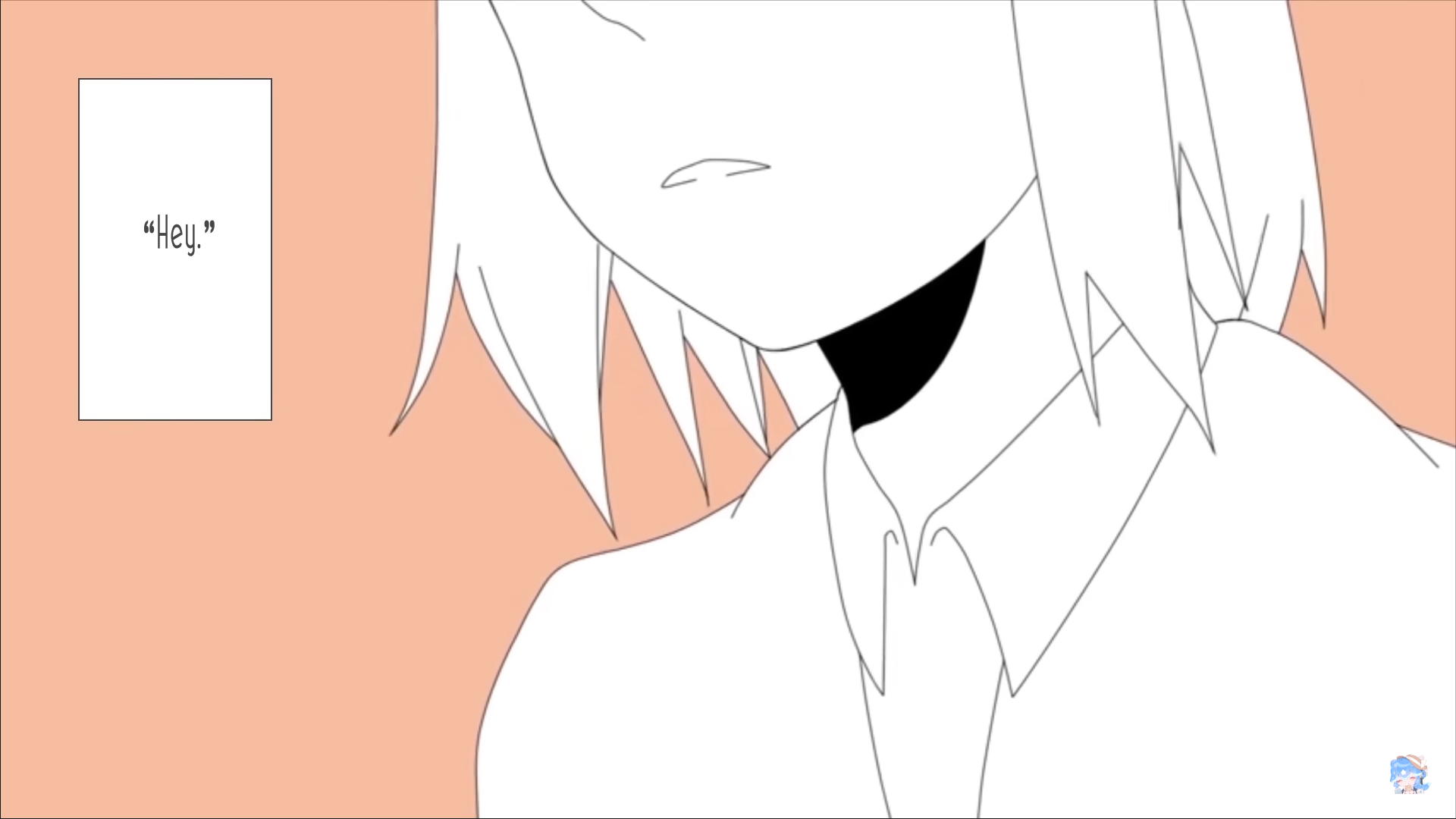

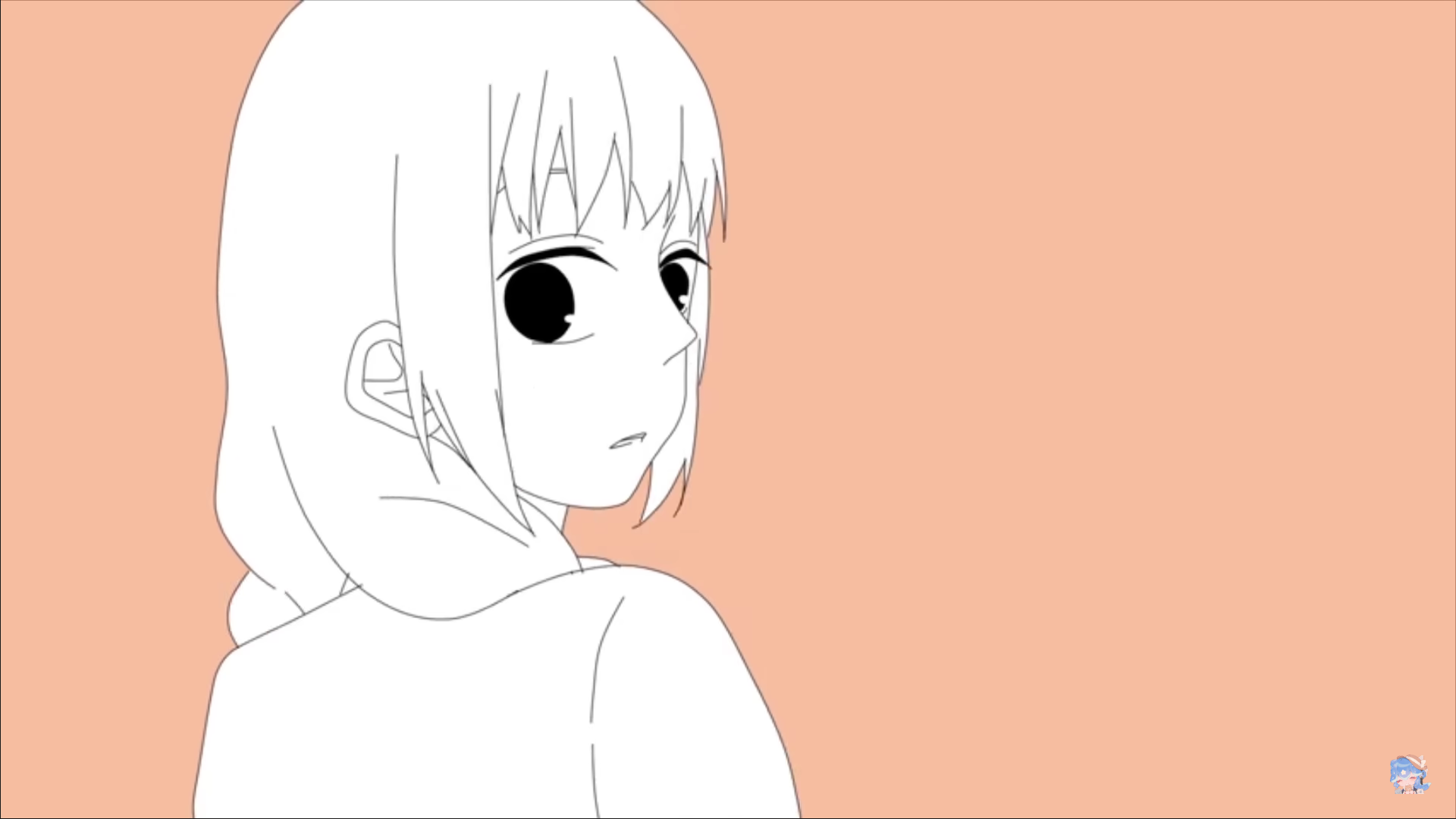
A few closing words
If you made it this far: thank you for being here! I sincerely hope that you enjoyed reading and perhaps learned many new things. As suicide is such a broad topic, I tried my best to cover the most suitable aspects in relevance to my blog. Needless to say, there is so much more to it (and even the topics I did cover might’ve been on the shallow side). So, feel free to further research if you’re interested! I included my sources through hyperlinks in the blog. A big thank you to my friend Naoko as well who helped me with the Japanese lyrics:どうもありがとう! ^^
On today's day, My R proudly stands as my no. 17 most listened song on Spotify :) Rarely have I heard a song with such a heartfelt story to it, yet with such a catchy tune as well. Down below I put a couple of links for you to emerge into the My R universe yourself. I recommend reading the comments as they're always very interesting! Because believe me, there is in fact much more to discover than I could ever possibly write in this blog... maybe next time ;)
Signing off, Milou
Links
Original Japanese vocaloid version - by KurageP
Real voice Japanese version - by Mashiro
Original English version - by Rachie (lyrics used in blog)
The English version I listened to - by Lollia
French version - by Poucet
German version - by Selphius
Diary of an Underage Observation - by KurageP
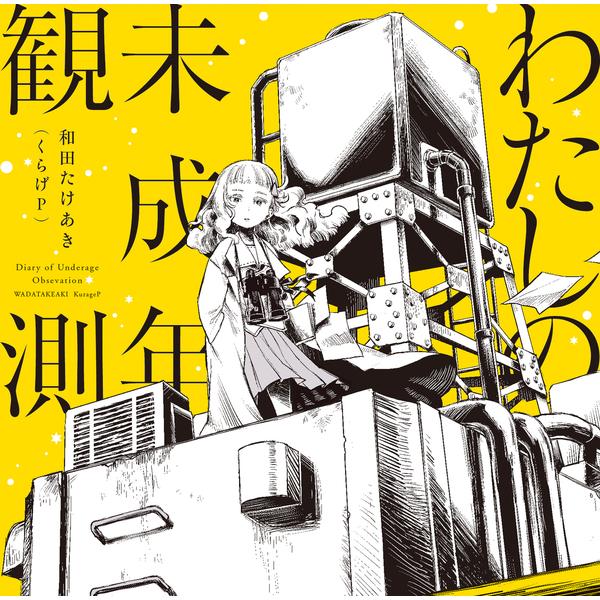
Reacties